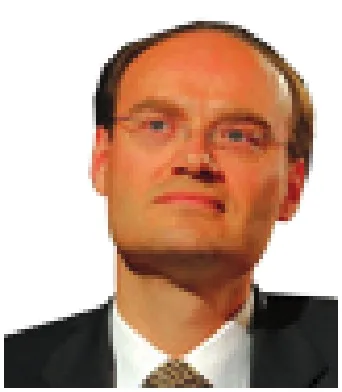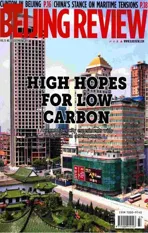Janus-Like China
2012-10-14ByDavidGosset
By David Gosset
Janus-Like China
By David Gosset

The author is director of the Euro-China Center for International and Business Relations at the China Europe International Business School
China is neither a “blank sheet of paper” nor an immutable monolith, but an immense living palimpsest upon which the most recent narratives cover but do not erase the underlying strata accumulated through millennia.
One of the most significant marks of the Chinese identity, the Chinese writing system, is both hypermodern and antique, it is avantgarde design and paleography, the signature of fashion and a perplexing relic.
Europeans who like to see in the Middle Country the elements mirroring their own cultural context—internal diversity, long-term history, the intricacies of ancient traditions—underline the commonalities between the two edges of the Eurasian continent. However, by its entrepreneurial spirit and indefatigable optimism, 21st-century China shares many similarities with the American fabric.
European classicism and its sense of restraint and proportion resonate in the Far East, but the Chinese world is also familiar with America’s rhythm and dimensions, the pulse of the “Modern Man” celebrated by Walt Whitman beats nowadays along the Yellow River, on the Himalayas or across the Taklamakan.
China values equilibrium and moderation but its obsession with largeness,da, is commensurate with the extent of its geography and the size of its mega-society, and in a rich paradox, the home of the Confucian Middle Way often savors, like America, the exaltation of the limitless.
In that sense, China encompasses the Old World and the New World. It is a permanent tension between the presence of an immemorial past and an endlessly promising future.
Some Chinese megacities symbolize this productive duality. Zhengzhou, Xi’an, Nanjing or Beijing envelop, despite their contemporary attributes, the country’s memory, while Hong Kong, Shanghai or Shenzhen’s skyscrapers hurry into the unknown.
In these urban areas, many young talents are apt to create and navigate a cyberspace with Chinese characteristics but at the same time, China’s post-’90s generation uses the latest communication technology to discuss Louis Cha’s historicalwuxiastories, in the universe of the Chinese geeks the Silicon Valley is inhabited by the Terracotta Warriors.
China, like the Roman god of endings and beginnings Janus, has two faces. One is looking toward the past, the other into the future, this dual orientation—retrospect and prospect—allows her to relate equally with the West’s two main sides, Europe and the United States.
As the Far East’s cradle of civilization the Middle Country has certainly developed close affinities with European culture, but with its new frontiers in business, science and even art, it parallels the American epic. At the beginning of the 20th century, Shanghai, the Paris of the Orient, exhibited on the Bund its European charms, the Yangtze’s megalopolis echoes now, with the skyline of Pudong, New York’s verticality.
While 21st-century Europe is unable to inspire a global “European Dream” comparable to the “American Dream,” a “Chinese Dream” is taking shape.
Europe is often confined in the public’s imagination to the forms of its past. It is seen, in the words of the French historian Pierre Nora, as a collection oflieux de mémoire.
The external perception of China corresponds to its hybrid essence: One commonly appreciates China’s historical achievements, but, from Brasilia to Addis Ababa, from Canberra to Ottawa, China is increasingly perceived as a land of new frontiers where pioneers can enlarge the horizon. It can be said of Janus-like China, both museum and open road, that it is “Eumerican.”
The “Chinese Dream” is simultaneously the remembrance of the Great Wall, the Silk Road or the Forbidden City, and the hope of a new life, the emotional evocation of the past and the confident projection into the future.
On the Chinese palimpsest, the future is taking root. In the poemSnow, after a sardonic review of the towering emperors Qinshihuang, Hanwudi, Tangtaizong and Songtaizu, the 43-year-old Mao Zedong announced fearlessly that “for truly great men”one has to “look to this age alone.”
